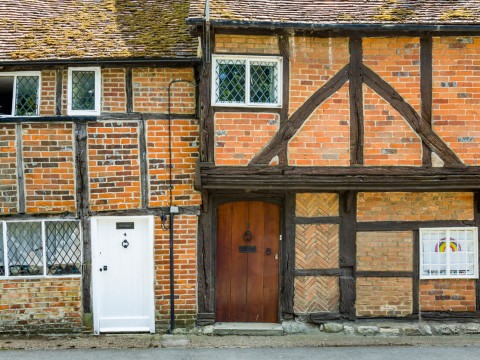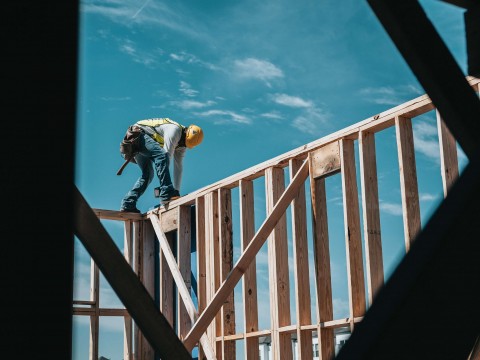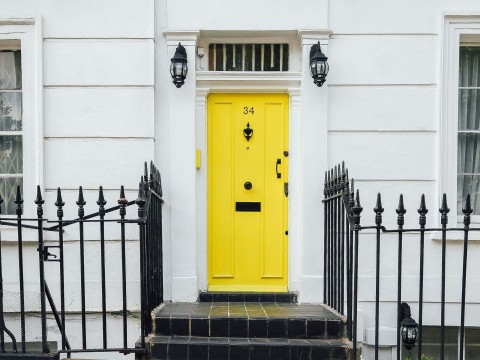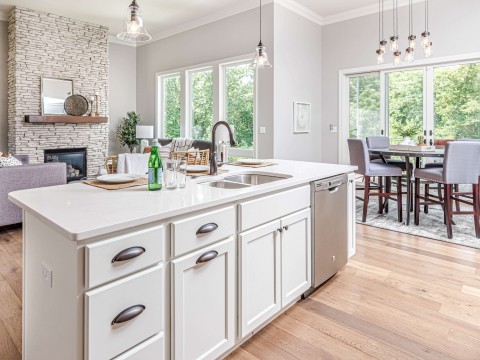What Are The Main Benefits Of Office Relocation?
Tuesday 26th April 2022
There are many benefits of office relocation that provide exciting new opportunities for growth. In short, moving offices provides a fresh start for both employees and for the business itself. In spite of the positive advantages, many people are put off by the prospect of uprooting and changing location. However, with the right preparation and by using a trusted business removals service, the process doesn’t need to be stressful. Not to mention, the benefits of office relocation make it well worth the effort. So, if you’re considering an office move however aren’t quite convinced, the following advantages might just help you make up your mind!
Reducing Running Costs
If you’re looking for ways to make savings within your business then moving offices could well make a big difference. Perhaps the rent and utility tariffs in your current location are a little overpriced, or maybe you’re paying for a bigger space than you actually need. Moving to a different geographical location can also be a potential money saver. For example, by moving just a few miles outside of the city centre you could find much cheaper office space that’s equally as functional. You could also consider downsizing or relocating to a shared space rather than continuing to lease out a whole building. This is a practical option with the emergence of hybrid working.
Inspiring Your Employees
As we mentioned a little earlier on, one of the main benefits of office relocation is that it provides the business and its employees with a fresh start. A change of scene is a great way to help your employees re-energise and enjoy a new working culture. Perhaps your current office is looking a little tired and uninspiring. Moving to a brighter and more modern space can have a hugely positive influence on the motivation and productivity of employees. You can also introduce a new layout that’s more conducive to collaborative work and your team’s other day-to-day duties.
Improving Brand Appeal
Another one of the most important benefits of office relocation that is often overlooked is its role in improving brand appeal and reputation. Your office doesn’t just provide a practical working place, it’s also a representation of and reflection on your brand. Creating an innovative space for your employees to work shows visitors, including important clients and business partners, that you are ahead of the curve, and that you can offer attractive employment prospects. Moving to an office space that reflects how you would like to be perceived as a brand is a key reason to make the move and just one of the many benefits of office relocation.
Encouraging Business Growth
Is your business currently growing or on track to expand in the near future? If this is the case, it’s essential to locate a work space that can accommodate a larger workforce as your business continues to grow. This may involve moving just down the road, or moving across the country. If your business goals and ambitions have changed, you may be considering moving location in order to seek out greater opportunities for growth. One of the many benefits of office relocation when it involves moving to a new part of the country is that it provides you with the chance to tap into a brand new market.
Thinking of making the move? If you are considering relocating your workspace, our experienced team of business removals experts are here to guide you through the process from start to finish. Please don’t hesitate to get in touch with the team today for further information, or to request a quote.
What Is Gazumping?
Friday 8th April 2022
We all know that buying a house can be a long and arduous process. One of the worst complications that can happen during this process is ‘gazumping’. This occurs when a buyer has had their offer accepted but then the seller accepts a better offer from another buyer before the sale is completed. Gazumping usually occurs when the seller has been made a higher financial offer. However, sometimes the seller may choose an alternative offer to speed the process up, if the current buyer is facing delays with surveys etc.
Gazumping is a real headache for buyers. It puts you straight back at square one, and in some cases can cost you money if you’ve already paid for surveys, conveyancing and mortgage fees.
Is Gazumping Illegal?
As unfair as it seems for buyers, unfortunately gazumping is perfectly legal. Even when your offer has been accepted, the agreement doesn’t become legally binding (in England and Wales) until contracts have been exchanged. The formal exchange of contracts usually comes very late in the buying process. The exchange of contracts in most cases will happen once a property survey has been completed, once a conveyancer has conducted the necessary searches and after mortgage offers have been received. As the sale is not legally binding until later on, unfortunately gazumping can be quite costly to buyers who experience it.
How Can You Avoid Being Gazumped?
Whilst there’s nothing concrete you can do to prevent gazumping, there are practical measures that you can take in order to help avoid it. This includes:
Acting Quickly
When buying a property, you want to get to the exchange of contracts as quickly as possible. This is the point at which the agreement is legally binding, and at which point you are no longer at risk of gazumping. With this in mind, be as proactive as you can in arranging surveys etc. as delayed completion will only increase the risk of getting gazumped. It helps to try and maintain regular contact with your conveyancing solicitor and mortgage broker to ensure that they are on top of responding to your requests.
Get A Mortgage In Principle
A mortgage in principle is a statement from a lender saying that they’ll lend a certain amount to you for the purchase of a property. In other words, it’s an official estimate of how much you can afford to borrow on a mortgage. Whilst a mortgage in principle is only a conditional offer, if you obtain one before going into the buying process, it is likely to speed procedures up a lot.
Ask For The Property To Be Taken Off The Market
Seller’s are under no obligation to take the property off the market once they’ve accepted your offer, however it’s always worth asking. If you’ve gotten to know the sellers, and shown that you're serious about the property, they are likely to be more open to taking it off the market. This reduces the risk of gazumping for buyers by reducing the chance of more people seeing the property and putting in higher offers.
Get Insurance
There are many different costs involved in moving house and so it’s always sensible to take out insurance. Taking out home buyer protection insurance won’t prevent gazumping, but it will leave you in a much better financial position in the event that you do get gazumped. If the sale falls through, having insurance will cover some of the cost spent on conveyancing, surveys and mortgage fees.
Consider Getting A Lock-In Agreement
A “lock-in agreement” is a contract between the seller and the buyer that gives the buyer exclusive rights to the property within a certain time period. This enables the buyer to organise their mortgage and removals company etc. without the risk of being gazumped. There will be legal fees involved, however it’s worth discussing the option with a conveyancing solicitor to see if it will benefit you.
Once you’ve reached the point of completion in the buying process and are ready to move into your new property, don’t hesitate to get in touch with our experienced removals team at Hackworthy & Sons. With over 45 years experience, we’ll ensure that moving day runs as smoothly as possible from start to finish.
How To Deep Clean A House Before Moving In
Monday 21st March 2022
When you move into a new home, you would hope that the previous tenants have left it in a clean and tidy state. However, unfortunately this isn’t always the case, or in instances where the property has been cleaned, it may not be up to the standard you would like. That’s why it’s always sensible to know how to deep clean a house before moving in. Cleaning the property whilst it is still empty, allows you to reach any dirt and grime that might be lingering, and that will soon be covered by furniture. You can always leave your belongings in storage temporarily to give you the space that you need to get organised. Taking the time to clean before you move in, means you can move your belongings into a shiny new property that is beautiful and fresh to make your own.
Not sure where to start with how to deep clean a house before moving in? Make sure to check out this simple and straightforward new house cleaning checklist:
Start In The Bathroom…
When thinking about how to deep clean a house before moving in, the most sensible place to start is the bathroom. This is because it’s likely to have been used when the previous occupiers were moving out, and you’ll also need to use the sink etc. for cleaning the rest of the house. You want to start by removing any stains. For really stubborn stains you can use vinegar and baking soda. Apply the mixture to the stains and let it sit for 30 mins before scrubbing off with a toothbrush. Next, you’ll want to disinfect the toilet, clean the sink area, and wipe down windows and mirrors. You also want to remember to clear out vents and fans with a feather duster to prevent the build up of dust. Removing dust as well as just stains and grime is an important factor to remember when discussing how to deep clean a house before moving in.
Then Move Onto The Kitchen
The next stage in how to deep clean a house before moving in is tackling the kitchen. This is where odours can be strongest, meaning you’ll want to get rid of them quickly. Not to mention, you’ll want to be able to enjoy a cup of tea and a snack whilst you’re unpacking everything. It’s best to start by cleaning out the fridge so that you have a hygienic space to start storing food. Next, you want to pull out any freestanding units to clean behind them, clean inside of cupboards and then tackle the counter tops. You’ll also want to take a look at any in-built appliances such as the oven, to check for any hidden dirt. Don’t clean the floor until last as this will allow you to mop up any debris that might have fallen on the ground in the process.
Work From The Top Down
As you work your way around the rest of the property, it’s important to start high up i.e ceilings and light fixtures, before tackling the floors. This is a key tip for how to deep clean a house before moving in as it will make the process a whole lot more efficient. For example, you don’t want dust from an old lamp shade falling onto your newly mopped floor. Always start by removing any dust before tackling any dirt or markings that might be on the ceilings or walls. When cleaning walls and ceilings, just be careful to pay close attention to what they are made from to ensure that you don’t cause any damage. For example, glossy paint will be a lot tougher than matt paint or wallpaper. When thinking about how to deep clean a house before moving in, when it comes to living spaces, hallways and bedrooms, make sure to pay close attention to corners. These will soon be blocked by furniture, making them hard to get to for future cleaning.
Focus On Floors
When discussing how to deep clean a house before moving in, it’s all too easy for the floors to be forgotten, however this is a crucial part of any new house cleaning checklist. It’s easy for hidden dirt to build up on floors, particularly on carpets where dust can quickly build up if they have not been hoovered regularly. This can create odours, but can also be a health hazard if large amounts of dust are left to accumulate. In some cases, when considering how to deep clean a house before moving in, it may be best to get the floors professionally cleaned to ensure they are in tip top condition, ready for when you move in.
Need help with your move? When moving day finally arrives, our experienced team at Hackworthy & Sons can assist with the entire removals processfrom packing to unpacking on the other side. Don’t hesitate to get in touch with the team to discuss how we can help out with your move.
5 Benefits Of Moving To The Countryside
Tuesday 1st March 2022
Fed up of the hustle and bustle of city life? Dreaming of a calmer pace of life in the country? There are many perks of country living, and so if you’re considering ditching city life for rural life we can totally see why. If you’re undecided whether or not to make the move, looking at the following benefits may just help you make your decision…
There are many advantages of life in the countryside as opposed to life in the city. These include:
Improved Air Quality
As you can probably imagine, there is a big difference in air quality between the city and the country, and this is a huge advantage that comes with moving to the countryside. With fewer vehicles, buildings and infrastructure, rural areas do not face the same levels of pollution that urban areas do, making the air a lot cleaner. Living in cleaner air away from nasty pollution has many key health benefits.
Enhanced Sense Of Wellbeing
Nature is known to have a positive impact on our mental health and if you’re planning on moving to the countryside you’re going to be surrounded by plenty of beautiful nature and wildlife. Being surrounded by nature is particularly good for reducing stress and anxiety. This combined with the slower pace of life that comes with moving to the countryside can do wonders for your sense of wellbeing.
Lower Cost Of Living
If you’ve become used to paying city centre prices, you’re likely to get a pleasant surprise when moving to the countryside. Whilst the cost of living will of course vary from location to location, if you’re moving to the countryside from a big city you’re likely to see lower prices in the likes of shops, restaurants and bars. This means there are some financial benefits of moving to the countryside.
More Space & Privacy
One of the main drawbacks of living in urban areas is the lack of space and privacy. As cities are more densely populated, accommodation is squeezed in, providing you with less living space and ultimately less privacy. Moving to the countryside changes this by providing you with more of your own space, away from other people. If you’ve dreamed of building your own home, the countryside will also provide you with the space to do this.
Greater Sense Of Community
Even though you’re surrounded by hundreds of people, urban living can have a tendency to feel lonely at times. By moving to the countryside you’re likely to feel a greater sense of community and be more connected to your neighbours. As fewer people live in rural areas than cities, it’s easier to get to know people. This can make home more inviting as well as doing wonders for reducing loneliness and boosting your mood.
Thinking of moving to the countryside? Make your move stress free with Hackworthy & Sons. We can assist with the entire moving process from packing to storage to unpacking. Don’t hesitate to get in touch with us today to find out more about the services we have to offer.
Relocating For A Job? Here’s How To Prepare
Tuesday 1st February 2022
There are many benefits of relocating for a job, however with so much to consider, the prospect can seem daunting at first. That being said, with the right preparation and organisation, relocating for a job doesn’t have to be a really stressful experience. If you’re planning on relocating for a job in the near future, make sure to consider the following steps:
Ask About Moving Expenses
One of the main worries that people can have when relocating for a job is cost. Before putting your hand in your own pocket, you should always check with your employer to see if they can reimburse you for any of the moving costs. In most cases employers will offer at least a partial contribution towards the cost of moving and so it’s always worth asking. In some cases, companies may even assist in the buying or selling of your home and helping your spouse find a new position.
Research The New Location Before You Move
Before you commit to moving anywhere, it’s essential to have a strong idea of what the area is like. This is to ensure it has the necessary transport links, schools, restaurants, shops etc., and that it suits your lifestyle. If possible, you should always try and visit the place in person, however when this isn’t possible, research online as much as you can. Relocating for a job is much less stressful when you know what to expect once you arrive in your new home.
Set A Budget
Once you’ve ascertained the cost of living in the new area, and found out any financial assistance you’ll receive from your employer, it’s a sensible idea to set a budget. This will of course take into account the cost of the property itself, however you should also consider the cost of moving i.e removals and storage, any repairs that will need to be made to the property and the cost of getting yourself and your family to the new location via car or public transport.
Decide On A Moving Date
When relocating for a job, it’s always best to move a couple of weeks before your start date if you can. This gives you time to pack and settle in without stressing before your first day of work. It’s likely that your employer will give you a period of time between leaving your current position and starting the new one. Setting a moving date in advance will give you a clear idea of how much time you have to prepare, allowing you to plan for an organised, stress-free move.
Organise A Removals Company
Organising your move with a reliable removals company is another key step in taking the stress out of relocating for a job. That way, you don’t need to stress about rushing around tying up loose ends on moving day. If you choose to move with Hackworthy & Sons, we’ll assist you in the moving process from start to finish. That includes packing, any storage you might need, as well as insurance cover, included in your quote. If you are a business director relocating office, we’ve got you covered in this department as well.
Tie Up Loose Ends At Your Current Location
If you’re relocating for a job, you want to start afresh straight off the bat. You don’t need to be worrying about having left loose ends untied in your old location. So, in advance of your moving date, make sure you’re winding everything down to avoid a last minute rush before moving day. That includes work-related matters as well as switching over utility contracts etc.
If you’re relocating for a job and would like to hear more about how Hackworthy can help, please don’t hesitate to get in touch with us to learn more about our home and business removals services.
What Is Delayed Completion & Is It A Risk?
Monday 10th January 2022
Completion is the final stage in the process of buying a property. This is the point at which you pay the agreed purchase price, meaning the house becomes legally yours. Ordinarily, the time period between exchange and completion is usually 2-4 weeks, however in some cases it may be possible for a delayed completion house purchase to be implemented. Let’s take a closer look at what this involves.
What Does ‘Delayed Completion’ Mean?
With a delayed completion, a sale price is agreed with a buyer, however the actual completion is delayed for months to years. There are many different reasons that delayed completion can be beneficial for buyers and sellers. These include the following:
- Your seller needs more time to find themselves a new property to move into
- You can’t move into the property for a delayed period of time e.g if you’re moving back to the UK from abroad
- You’re buying a new build property for which construction has not yet finished
- You’re buying a rental property and need to wait for the current tenancy to end before you can move in
- You’re waiting on speculative planning permission to see if you can make the necessary changes to the property before completing the purchase
As you can see, there are many benefits to delayed completion. It gives sellers time to find the perfect home for them with the assurance that their house is already sold (subject to actual completion). Delayed completion also gives buyers the time they need to raise funds to purchase their new property and look into any maintenance that might need doing, as well as giving them time to organise a removals company without rushing. Delayed completion can be an effective negotiation tool for buyers as sellers will often accept a lower price if they know they have the time to find their ideal new home.
That being said, delayed completion does also come with it’s own set of risks. Let’s take a closer look at what these involve:
What Are The Risks Of Delayed Completion?
- As a seller, you maintain full control of the property until the date of completion. The seller is legally obliged to hand over the property in the same state as when it was exchanged, making them responsible for any maintenance issues until completion
- Additionally, delayed completion gives the seller more time to change their mind. As a buyer, the property is not legally yours until completion actually takes place.
- A lower deposit may need to be agreed. In the case of delayed completion, it is not uncommon for deposits as low as 5% to be agreed.
- The mortgage in principle may not be upheld by the time you get to completion
If you are thinking of entering into a delayed completion, it’s crucial to ensure that buyer and seller mutually agree on the terms of the agreement. If delayed completion is successful it has many benefits for both buyer and seller, however it doesn’t come without risk. There is a high chance of the sale falling through and of additional financial costs being incurred. That’s why it’s important to think about the decision thoroughly and be 100% sure that buyer and seller are on the same page.
6 Tips For Staging Your Home To Sell
Wednesday 22nd December 2021
When you’re trying to sell your home, first impressions are everything. So when preparing your house for viewings, it’s important to consider how you are presenting it to potential buyers. That’s where staging comes in. Staging your home involves highlighting it’s most impressive assets, adding decorative features and rearranging furniture where necessary. The ultimate aim is to make your home more appealing to potential buyers so that it sells more quickly and for the best price possible. Take a look at the following top tips for staging your home before your next house viewing:
Focus On Important Rooms
One of the most important tips for staging your home is to concentrate your efforts. Some rooms in the house hold more importance than others to potential buyers and so make sure to focus on staging your home in the rooms where it counts. Pay particular attention to the living room and kitchen as this is where people spend the majority of their time in the house. In addition to this, make sure to give the master bedroom some extra attention as this also has a big influence on the buyer's decision. Focussing your efforts will save you more time and make the process more efficient.
Add Fresh Greenery & Flowers
Another one of our ultimate tips for staging your home to sell is to place houseplants and flowers around the property. You don’t want to overdo it, but a few well placed plants and vases of flowers will breathe life and freshness into the home. You can also use flowers to introduce a few subtle hints of colour into a space. This is one of the most simple tips for staging your home but one that will make a big impact when it comes to selling your home quickly.
De-Personalize The Space
When potential buyers are viewing your home it’s important for them to be able to visualise the space as their own. That’s why one of our most important tips for staging your home is to remove personal touches where possible. We’re not talking about completely transforming your home but removing personal items such as toiletries and medication will allow viewers to visualise themselves in the property.
Choose Neutral Colours
Whilst we’re big fans of filling your home with colour and personality, when it comes to staging a house to sell quickly, it’s best to stay neutral. Not everyone will be a fan of bright and bold style and so sticking to a neutral colour palette will allow you to appeal to a wider range of buyers. Bold colours and patterns can also distract from the property’s most important assets. This is one of the tips for staging your home that may require a little more effort, however one that will make a huge difference.
Use Lighting To Your Advantage
Another one of our top tips for staging your home is to brighten up the space using lighting. The lighter and brighter you can make your rooms, the more appealing it will be to potential buyers. Start by clearing window spaces to let as much natural light in as possible and then use lamps to create spots of light and to create ambience in different rooms. This will make the property instantly more inviting.
Rearrange Your Furniture
The best tips for staging your home to sell don’t involve spending a lot of money, but rather using what you already have in a smart way. Rearranging furniture plays a big role in this. You want the space to look as open and spacious as possible and so make sure to place any extra furniture that’s taking up too much space into storageand rearrange the remaining furniture to make the room look as spacious as possible.
We hope these tips for staging your home will have you selling your property in no time. When you’re ready to make the big move, get in touch with us at Hackworthy for a stress free moving experience.
What To Consider Before Buying A Listed Building
Friday 17th December 2021
There’s no denying that listed buildings are unmatched in charm and history. After all, that’s why they have their protected status. So, if you’re thinking about buying a listed building, we certainly don’t blame you! When it comes to buying a listed building there are however a few key factors to be aware of. Buying a listed building to live in can come with additional costs and extra work. We’ll take a look at the main factors involved in buying a listed building in just a second, but first let’s take a moment to clarify what it means for a building to be ‘listed’.
What Counts As A ‘Listed Building’?
A listed building is a property that has been placed on the national register of buildings with architectural or historical importance. This includes most properties built before 1840. The aim of protecting these buildings under law is to preserve and maintain them for future generations. That’s why these buildings carry extra restrictions and maintenance. There are 3 different levels that determine how a property is graded. These are:
Grade I: buildings of historic, national or outstanding architectural interest
Grade II: significant buildings of local interest
Grade II*: buildings of special architectural or historic interest
Now that we’ve established what counts as a listed building let’s take a look at the main factors to consider when buying a listed building. These include:
Listed Building Consent
Listing imposes restrictions upon the changes that homeowners can make to a property. So before buying a listed building, you should always check what’s covered in these restrictions. If you want to make changes to the property then you’ll need to gain permission from the local conservation officer. It’s important to note that you’ll be required to supply a lot more detail in your application than you would for regular planning permission. In short, it’s a lot more complex to make changes to a property when it is listed. If you’ve fallen in love with the property then this isn’t an issue, however if you’re not completely happy with the property as it is then this can be one of the main disadvantages of owning a listed building.
Extra Maintenance Costs
As we mentioned previously, buying a listed building does come with extra costs. Due to the fact that listed buildings are very old, they’re likely to have more maintenance issues than modern homes. So, when thinking about buying a listed home, make sure to factor the cost of maintenance and repairs into your decision making. Additionally, repairs will often require the use of specialist materials and specialist tradesmen which will of course make the process more costly. The good news is that you can sometimes get grants from Historic England to help towards the costs of these repairs. Regardless of this, before buying a listed building, make sure to get a comprehensive survey completed so that you’re aware of the amount of repairs that you’ll need to pay for.
Specialist Home Insurance
Another key factor to consider when buying a listed building is the fact that you may need to take out specialist insurance. This isn’t always necessary, however when applying for home insurance, you’ll need to inform the insurer that the property is listed. In many cases, you may need specialist cover, depending on the type of property that you’re buying. Be aware that as the homeowner you’re also responsible for unauthorised alterations made before you moved in and so you may want to look for insurance that covers pre-existing works.
Should I Buy A Listed Building?
Buying a listed building certainly comes with its own set of challenges. However, the benefits of owning such a unique and beautiful property can’t really be argued with. The key to buying a listed building is doing plenty of research so you know exactly how much work and how many costs you’ll be taking on if you go ahead with the purchase.
Once you’ve found your dream home, get in touch with the team at Hackworthy to arrange a stress free moving day. With over 40 years experience in removals you can rely on our services for a simple and stress free moving experience.
How To Make A House A Home When You Move In
Thursday 9th December 2021
When you move into a new property it can feel difficult to settle in at first. So, if you’re planning on moving soon and are concerned about how to make a house a home, you’re certainly not alone. The great news is that with a few simple changes here and there, it’s easy to make your new property feel more like home in no time. These are just a few of our top tips on how to make a house a home:
Clean & Tidy
The first step in how to make a house a home when you first move in is to give it a deep clean from top to bottom. Even if you’re moving into a new build property, this is still important as there are likely to be remnants of dust and dirt from building work. Cleaning the entire house will present you with a fresh, blank canvas to make your own. As you unpack, make sure to get rid of any clutter that you didn’t manage to sort through before moving, and get organised from the start. You can always leave a few boxes in short term storage to give you the breathing space that you need to get organised once you first move in.
Organise Your Bedroom
Anyone who has moved house will know how much organising and unpacking there is to do when you first move in. If you’re feeling overwhelmed, the best thing to do is to start by organising the bedrooms. Creating a calm and organised room for you to relax and sleep in is really important in helping you feel settled whilst you’re still trying to sort out the rest of the house. So if you’re not sure where to begin with how to make a house a home when you move in, start by setting up your bed, unpacking your bedroom belongings and clothing, and adding your favourite decor pieces and home comforts. This will give you a homely base to return to if the rest of the house is in chaos for a little while longer!
Add Greenery & Flowers
Nothing breathes calm and positivity into a room like nature. That’s why one of our favourite tips on how to make a house a home is to add greenery in different rooms of the property. You may want to dot smaller plants around the house or opt for a couple of large statement plants. In addition to green foliage, don’t forget that you can always rely on flowers to brighten your home (and your day!). Place vases of flowers around the house to make you smile as you walk by, and if you’re concerned about the cost you can always use faux flowers that look just as pretty.
Get Cooking
The key trick when thinking about how to make a house a home is to establish a routine. Central to this is cooking. So, once you’ve got the kitchen unpacked and are feeling a little more organised, it can be a really nice idea to cook a meal and invite a few loved ones over to join you. You don’t need to cook anything fancy. It’s all about putting your new kitchen to good use and sharing your new home with your nearest and dearest. This is a crucial step in how to make a house a home, and inviting friends or family over will help you to create the first special memories in your new home.
Display Sentimental Items
Ultimately, the process of how to make a house a home is all about making it your own. That’s why it’s so important to fill the property with all those items and heirlooms that mean the most to you. This might be a sentimental ornament, a special vase or your favourite recipe book - you name it. What’s important is bringing your personality into the house. Displaying family photos is another key part of this when thinking about how to make a house a home. So, make sure to prioritise putting up the photos that make you smile when you move in.
Make Your Home Smell Good
There are some smells that just make us feel at home, which is why one of our top tips on how to make a house a home is to fill the property with your favourite scents. Every home has its own distinct smell, and so establishing yours will make you feel more at home every time you walk through the door. Using candles and aroma diffusers can also help to make you feel more calm and therefore more settled. Whether you’re a big fan of fresh linen, florals or lavender, filling your home with scent is a key step in how to make a house a home.
Whether you’re set to move house soon or have recently moved in, we hope that these tips on how to make a house a home will have you feeling settled in no time. Don’t hesitate to get in touch with our team at Hackworthy to hear more about the simple and stress free removal services we have to offer.
5 Tips For Selling Your Home In The Winter
Thursday 2nd December 2021
From a seller's perspective, selling your home for a good price during the winter can be a lot more difficult than selling your home at other times of the year. However, that certainly doesn’t mean it’s not possible. Make sure your home is in the best position to sell to potential buyers with our top 5 tips for selling your home in the winter.
Stage Your Home For Viewings
The first of our tips for selling your home in the winter is to stage your home for viewings. One of the best ways to sell your property for a good price is to make your house feel like a home by making it as warm and cosy as possible. This is a particularly important tip for selling your home in the winter when potential buyers have come in from the freezing cold weather outside. We would highly recommend making a fresh pot of coffee, or a warm hearty meal so that your home is full of pleasant and inviting smells. If there’s a key feature or selling point in your home, make sure you show it off. This may include lighting the log burner or turning on underfloor heating.
Decorate Your Home For The Festive Season
Do not be afraid to decorate your home for the festive season. This is a top tip for selling your home for winter for a number of reasons. The first reason being that if this is going to be the last Christmas in your home, you want to make the most of it! However, more importantly from a seller’s perspective, making your home look festive adds another selling point to potential buyers. Focus on the first room viewers will see. It should be de-cluttered, smelling festive, and providing a ‘wow’ factor. Just be careful not to overdo the decorations so that buyers can see all aspects of the house clearly.
Be A Warm Host
If you choose to be in the property whilst potential buyers are looking around, always try to be as warm and as friendly as possible to ensure that buyers leave the viewing having had a positive and memorable experience. Without being too pushy, make sure you are telling the viewers the key selling points of the house and how you are prepared and organised to move out the property once you have found a buyer. This is an essential tip for selling your home in the winter that it’s important to avoid overlooking.
Give The Garden Some TLC
We can all admit that our gardens definitely get neglected during the winter months, with the grass looking sorry for itself, the plants looking windswept and the garden furniture looking a little worse for wear. That’s why one of our top tips for selling your home in winter is to make sure you give the garden some well deserved TLC before a potential buyer comes over to view the property. Treat the garden as an extra room like you would in the home in order to optimise your selling opportunities.
Good Lighting Is Key
Good lighting is something we would highly recommend focusing on when it comes to selling your home during any time of the year, however it’s a particularly important tip for selling your home in the winter. A light and bright property is a lot more appealing to potential buyers than a home that is poorly light and doesn't get much natural light of its own. You can create this illusion by switching out yellow tone bulbs with white light tones and choosing clever lighting options when it comes to kitchens, hallways, stairs and bathrooms.
Should I Rent Or Buy A House?
Wednesday 24th November 2021
If you’re thinking about moving home then one of the questions you may be asking yourself is “should I rent or buy a house?”. It’s an age old question, and one that doesn’t have a right or wrong answer. Whether you’re a first time buyer or have been on the property ladder previously, ultimately, the decision comes down to personal circumstances and preference. That being said, in order to help you answer the question of “should I rent or buy a house”, it does help to consider the following key factors:
Cost
When asking yourself “should I rent or buy a house”, one of the most important factors you need to consider is cost. Buying a house involves lots of upfront costs including a deposit, mortgage fees and stamp duty. So, before you consider buying instead of renting, make sure you have enough money behind you to pay all the upfront costs and then your monthly mortgage rate on top of your other living expenses. Renting a property is cheaper in the short term, however if you plan on staying in the property for a prolonged period of time, bear in mind that you’ll be paying money to a landlord, that could potentially be saved to put down a deposit on your very own property.
Short Term Vs Long Term
How long are you planning to live in the property for? This is an important question to ask yourself when deciding “should I rent or buy a house”. As a general rule of thumb, renting is better for short term accommodation, whilst buying a house is more of a long term commitment. Buying a house is a big commitment, and so you want to make sure that you’re planning to live there for a reasonable period of time. However if you are definitely planning on living in the house for a prolonged period of time then it’s definitely more economical to buy rather than rent.
Flexibility
Another important factor to consider when deciding “should I rent or buy a house” is flexibility. As we mentioned previously, buying a house is a big, long term commitment. Renting on the other hand, provides you with a lot more flexibility to move house once your lease expires. You’ll often have the option to choose between short term or long term leases as well. So, if you don’t want to stay in an area permanently or need to move around regularly for work, then renting is likely to be a better option for you.
Ownership
The great thing about owning a property is that you call the shots completely. When living in rented accommodation you’ll be restricted in terms of making the property your own. For example, you may not be allowed to have pets, and you’re unlikely to have the freedom to decorate. On the contrary, if you own a house you can decorate and treat the property however you choose. You’ll also have a greater sense of stability being in control of your accommodation, as when you’re renting there is always the risk that the landlord may ask you to leave the property once your lease expires.
Maintenance
When thinking about “should I rent or buy a house”, it’s also important to consider maintenance responsibility and cost. If you own a property then you’ll be responsible for paying for any repairs and maintaining the property’s value. It’s estimated that homeowners spend around 1% of the property’s value every year on maintenance costs. The benefit of renting is that you won’t have to pay for any maintenance costs as this will be the landlord’s responsibility.
Hopefully these tips will help you decide “should I rent or buy a house”. When you are ready to make the big move, Hackworthy & Sons will ensure moving day runs as smoothly as possible for you. Get in touch for more information or request a quick quote online.
What Is The Best Time Of Year To Buy A House?
Friday 19th November 2021
Are you a first time buyer, property investor, or maybe a seller? You may be interested to find out when is the best time of year to buy a house. There may be many different factors influencing the property market, weather that be location, season, school holidays or annual holidays like Christmas. Find out the best time of year to buy a house with this short and simple guide.
Best Months To Buy A House
Determining the best time of year to buy a house can be dependent on what you are looking for. Are you looking for a bargain or are you interested in having a variety of properties? If you are looking for a good deal then the best time of year to buy a house is the beginning of the year, typically the months of January and February, and the end of the year in December. This is because the days are much shorter and daylight is sparse. Weather is normally dark and grey and cold. Christmas has just ended, and many people are not in the best financial situation to look for a property. Therefore, sellers are willing to drop prices to attract more demand, so if you are wondering what is the best time of year to buy a house, this could be the right time to get a good deal.
The end of the summer, particularly August, can be a good time of year to buy as well. This is when most people are on holiday so demand is low. In the height of summer most people are considering where they will jet off to and packing their bags for a sunny getaway, meaning few people are looking at properties. Research also shows September can be a good time to buy, when the kids go back to school and parents have more time to look around, although this can mean more competition on the property market. Another fantastic time of year to buy is Winter, particularly the end of November and December. This is the lead up to Christmas so many people are preoccupied with buying presents and preparing for the festive season. So, this means sellers are likely to give discounts and deals as they want to attract buyers and get rid of their property before Christmas.
Worst Months To Buy A House
Having discussed what is the best time of year to buy a house, many of you may be wondering when is the worst time. Spring is the worst time of year to buy, particularly May. This is because the days are getting longer and the sun is coming through, with the good weather improving people's moods. This is the peak season for property hunting as many people are trying to move before the kids break up for summer holidays. If you are looking for a variety of choices this is the time to buy, however, it definitely comes with a price tag. Due to such high demand there is a lot of competition between buyers, and properties are often sold for more than their asking price. If you are looking for a bargain this is the time to avoid. The early part of the summer also sees the prices heighten, in particular the month of June where buyers are rushing to complete a deal before the summer break. Properties at this time of year also do not stay on the market for long, so if you are considering buying at these times you have to be quick.
Time Of The Week
When discussing the best time of year to buy a house, it’s also important to consider the specific days of the week that are best. Mondays are the best day to buy as many sellers can drop the price and offer discounts of up to 2.3% below market value. Friday is the second best day to buy your dream house. Discounts of 2% below market value can be found. Research shows mid week is the worst time to buy as there are more bidding wars between buyers.
When you start viewing potential properties to buy, make sure to take a look at our buyer’s guide on what to look for when viewing a house.
Can I afford To Move House? These Are The Costs Involved
Monday 15th November 2021
Moving house is exciting, however it can also be very expensive. If you’re wondering "can I afford to move house", the following guide will give you a clearer idea of the costs that are involved. In order to help you decide if moving house is a possibility for yourself at the moment, let’s take a look at all the costs involved from the buying process through to moving day.
Stamp duty
Stamp duty is a land tax that is placed on properties over a certain price. However, if you’re buying a home in England or Northern Ireland, you won’t have to pay stamp duty on properties that are under £500,000.
Valuations
Another factor to consider when thinking about "can I afford to move house", is the cost of valuations.When you’re applying for your mortgage, the lender might request a valuation in order to establish how much money they are prepared to lend you. Not all lenders will charge for this, however some might and so it’s another potential cost to be aware of.
Surveys
You should also organise a survey of the property before you buy it. This is to identify any problems within the property that you need to be aware of. Although this is an initial upfront cost, it could save you money on potential repairs in the long run.
Deposit
One of the biggest costs involved in buying a property is putting down the deposit. The amount of deposit will vary depending on the property, however on average, you can expect to pay at least 5-20% of the purchase price.
Mortgage fees
If you’re wondering “can I afford to move house”, another cost to be aware of is mortgage fees. Although you’re the one borrowing money from the lender, there are a few upfront costs it’s important to be aware of. These may include a booking fee/ arrangement fee and a valuation fee, as we mentioned earlier. If you choose to hire a mortgage broker there will also be a fee for this.
Legal fees
When buying a new house, you’ll need to appoint a solicitor or licensed conveyancer to oversee the legal aspects of the process. Usual legal fees for this will be between £800-£1500, however it’s a good idea to request quotes from different firms to give you the most reasonable fee possible.
Buildings insurance
When thinking about "can I afford to move house", another factor to consider is buildings insurance. This covers you for any damage to the structure of the building that could affect its value, and will need to start on the date that you exchange contracts. Most mortgage lenders will also require you to have buildings insurance.
Estate agent fees
You’ll only need to pay estate agent fees if you’re selling. This is usually 1-3% of the sale price plus 20% VAT, or a flat fee for online estate agents.
Moving day costs
When thinking about, ‘can I afford to move house’, it’s also important to factor in the costs involved with moving day. With the right organisation, moving day doesn't have to cost you an arm and a leg, however these are the general costs to be aware of:
Removal company
Choosing the right removal company will reduce the stress of moving day and save you a whole lot of money. At Hackworthy & Sons, our professional team will support you through the process from packing to unpacking. Unlike most other removal companies, our quote for UK removals also includes insurance cover for all your belongings throughout the move. This saves you having to fork out on the additional stand alone cost of removals insurance. You can request a quick quote for removals online.
Storage
Do you need to store your belongings temporarily before you move into your new home? Or, are you downsizing house and needing to look at long term storage options? We offer a range of storage options to suit your requirements. We can send an estimator out to you in order to give you an accurate idea of costs.
Mail redirection
When thinking about “can I afford to move house”, one of the smaller fees that people often forget about is the cost of redirecting your mail. This ensures that all your mail will come to the new address, giving you time to change your address on all your accounts. The price for this ranges from £33.99 for three months to £66.99 for 12 months.
Cleaning
If you’re moving out of a rental property you may be required to get the place professionally cleaned. It’s best to check with your landlord or agency to see what is required in order to avoid incurring any additional fees.
New living costs
Think about the new furniture and appliances that you’ll need to buy as soon as you move in, and factor this into your budget. It’s also important to consider the ongoing costs of utilities and broadband and TV. Council tax is another cost to factor in when you move house. You can check online or with your local authority to see what your council tax band will be for the area.
For more information on any of our removals services including our European and overseas removals, please don’t hesitate to get in touch with us.
First Time Buyer’s Guide: Tips For Buying Your First Home
Friday 5th November 2021
Stepping onto the property ladder can be daunting, however it’s also an incredibly exciting time. If you’re thinking about buying your first home but are a little unsure about the process, don’t panic! Our simple first time buyer’s guide is here to give you all the information you need about what to do when buying your first home.
Work out your mortgage options
Before you start looking for a property, you need to have an idea of what you can afford, a vital first step on our first time buyer’s guide. The easiest way to do this is to visit a mortgage advisor who will be able to talk you through the different mortgage options that are available and give you a good idea of what you can afford. The initial deposit, length of the mortgage and interest rate all affect your monthly mortgage payments and so these are all important factors to take into account.
Save for a deposit
No first time buyer’s guide would be complete without mentioning the importance of saving for a deposit. A deposit is typically between 5-20% of the property’s value, and so it’s certainly not a small amount of money. That’s why it’s important to start saving early and think about setting money aside in an ISA where you will earn a higher amount of interest.
The good news is that in his March 2021 Budget, the chancellor announced a new mortgage guarantee scheme for first time buyers and homeowners. This will involve the government offering a guarantee to banks in order to encourage them to offer 95% mortgages, helping people to buy a property with a 5% deposit. The scheme will run from April 2021 to December 2022, with new and existing properties priced up to £600,000 all eligible.
Finding the property itself
The next, and probably most exciting step in our first time buyer’s guide involves searching for your dream home. When reading property descriptions, look out for certain factors including the age of the property, floor plans, storage space, energy efficiency rating, double glazing and council tax. Consider what you want from the property and surrounding area. What are the shops and facilities like? Are there good transport links? What are the local schools like? These are all good starting factors to help narrow down your search. Once you view the properties in person, you’ll be able to get more of a feel for whether or not it’s the right home for you.
Get a mortgage in principle
Before you start viewing properties in person, it’s a good idea to get a mortgage agreement in principle. This will give you a rough idea of what you can afford, how much you can borrow and how much you’re likely to pay each month.
Attend viewings
Another exciting step on our first time buyer’s guide is viewing the properties. This is your chance to get a feel for the place and see if you could picture yourself living there. Viewings are also a precious chance to ask any questions you might have and so it’s always a good idea to be prepared. You can read more about what to look for when viewing a house as a buyer in our previous article.
Make an offer
This is the point at which you make that all important offer. Make sure that the offer is realistic because otherwise the estate agent is unlikely to accept. If they don’t accept you might have to go back and reassess your figures. If they do accept then you’ll receive a written contract titled ‘Subject to survey and contract’. At this stage, you should also formally apply for your mortgage. If you’ve already got a mortgage in principle this should speed things up as it will just be a case of finishing off the process.
Surveys and conveyancing
Conveyancing means transferring ownership of the property from one party to another. A qualified conveyancing solicitor will be able to take you through this process. At this point, you’ll also need to instruct a surveyor who will be able to highlight any structural issues in the property.
Exchanging contracts
This part of our first time buyer’s guide involves finalising the buying process. Once the mortgage has been approved and the solicitor is happy with the survey, you can sign the contract giving you ownership of the house. The seller will sign their copy and each party's solicitors will swap contracts to be signed by the opposite party. This is the point at which you’ll also pay your deposit.
Insuring the house
Your mortgage lender is likely to insist that you buy home insurance, however regardless of this, it’s always a good idea to insure your home. This will give you peace of mind in case of flooding, theft or other potential damages.
Get moving!
Last but certainly not least in our first time buyer’s guide is the big move itself. This is the most exciting part of buying your first home and doesn’t need to be stressful if organised in the right way. At Hackworthy & Sons, we make the process as stress free as possible from packing up your belongings to unpacking them in your new home. Request a quote today or contact us for more details.
A quick note on stamp duty
Stamp duty is a land tax that you pay on your home. The more valuable the property is, the higher the stamp duty. In the March 2021 budget, the chancellor announced that the stamp duty holiday would be extended. This means that from 1st July to 30th September, stamp duty will only apply if the property you buy is worth over £250,000. From 1st October 2021, the usual stamp duty threshold of £125,000 will return.
5 Ways Downsizing House Could Drastically Improve Your Life
Friday 29th October 2021
As the housing market is increasingly busy, people may be looking to downsize their homes as their children begin to flee the nest. If you’re an empty nester there are many things that can improve your life as a result of downsizing your house, so keep reading if you’d like to find out more.
Saving Money
First up on our ways of downsizing a house is the benefit of saving money. The obvious way to save money by downsizing your house would be that you have to heat less rooms / space in the house. However, you’ll likely also be feeding less people in the house, using less water, and even use less electricity. Not to mention the smaller mortgage repayments that will be a result of moving to a smaller house.
During the process of downsizing your house you’ll almost definitely need to dispose of or donate things in your house that you don’t want or need anymore to move into your smaller home. So, on the contrary to saving money there may even be opportunities for you to make money selling any items that you no longer need and are in good condition for others to make use out of. Facebook marketplace, gumtree etc are great ways to sell items especially furniture to those in need.
Saving Energy
As we’ve just covered that less utilities will be used in a smaller house as there are less people, this helps save energy in the house as it will take less time to heat the house then it would have to reach all the spaces in a bigger house. In turn, not only does this save you money, but is also a fantastic way to help the environment and make your home greener. The more small steps we can take to help the environment the more impact we will have.
Decluttering
You may not think that downsizing houses can help improve your life, but the process of getting rid of any unwanted clutter can really help clear your mind and remove a “mess” from taking up space in your mind worrying about having to organise this when you may be busy doing other things. Organising things into its own places, will help you know where everything is and avoid any stressful situations trying to find something amongst the clutter.
Save Time
Another way to improve your life by downsizing your house is the upkeep required on your home. By downsizing you will be able to save time with less rooms to tidy and clean meaning that you can keep on top of the organisation, in turn helping you to know where to look for things. And … if you have a cleaner this will save their time cleaning your home, saving you money again.
Less Lonely
Any empty nesters out there can benefit hugely from downsizing houses, as this is a great way of making the house feel less empty. With less rooms empty in the house this will give each room a purpose and help make the home feel cosy rather than empty.
If you’ve experienced any other ways that downsizing a house has improved your life, we’d love to hear them, make sure to share them with us on Facebook or Twitter and we might add them to this article.
How To Move Plants When Moving House
Friday 8th October 2021
For all us plant lovers, knowing how to move plants when moving house is a big deal. After all, our favourite house plants and flowers pretty much become part of the family. So, when moving day comes around, you want to make sure that all your favourite greenery gets transported without any accidents. With this in mind, we’ve put together the following tips on how to move plants when moving house, to ensure they keep thriving.
How To Move Indoor Plants When Moving House
The biggest worry that comes to mind when thinking about how to transport plants when moving house is them dying through lack of sunlight and nutrients, or their pot smashing or tipping over. Here are some essential steps you should consider when it comes to packing up your plants for the big move.
- Planning and preparation - We wouldn’t recommend packing your plants until the very last minute if you can help it, just to make sure that they have every chance of survival. A day or two before it is time to pack up and leave, give your plants a nice big water. This will make sure they have the best chance of survival if they cannot be watered for several days.
- Packing - Packing plays a big part in how to move plants when moving house. When it comes to packing up, wrap large plants with an old bed sheet or tissue paper to prevent branches and the pot from breaking.
- Positioning - The position your plant is placed in the box is also crucial. Place each pot in a box so it fits snugly at the bottom, and if possible, place softer furnishing around the plant for extra security.
- Label the box to ensure that our team knows that there are delicate items inside so that we can handle them with extra care and consideration.
Plan To Move Outdoor Plants When Moving House
When thinking about how to move plants when moving house, garden plants can be a little more tricky and there are a number of things that should be considered…
- Where will the plant go in your new home? Consider drawing up a plan of your new garden to determine exactly where they will need to go. You should try to take into account factors such as the soil type, likely exposure to wind or frost, and the orientation of your new garden. Some plants will fare better in the warmth and light of a south-facing garden, whilst others prefer a more consistent, northerly aspect. Taking this into account when thinking about how to move plants when moving house will ensure that they have the best chance of survival once they’re in their new home.
- When is the best time to start preparing your plants? When it comes to trees and shrubs, it’s much easier to move them when they are younger. You should also consider that most plants do not take well to being ‘re-rooted’, so more established plants should be handled with extra care. Where possible, outdoor plants should be placed in a dry, sheltered area ahead of the move. Depending on the variety and time of year, it can also be beneficial to give larger or climbing plants a good prune ahead of time. Cutting your plants back will minimise the risk of damage, and make the process of moving easier.
- What’s the best way to pack outdoor plants? Smaller houseplants can be placed in lined, open boxes and padded with paper for protection. Larger, stable pots can be placed inside plastic bags. However when it comes to unpotted plants, the easiest way to transport them is by placing them in a lined box, with long stems or branches gently tied together for additional support.
After the move, your plants may still look slightly withered and tired, due to being moved and replanted, therefore there will be a period of time where they will need to recover. For many smaller plants, they can fully recover within a few weeks. For larger plants or trees, it can take months or even years for all problems caused by transplant shock to resolve. A simple case of wilting after repotting can be resolved with good care and often the plant has no residual signs of damage. Not to mention, if you follow our top tips on how to move plants when moving house, you shouldn’t run into any accidents or damages anyway.
The Pros And Cons Of Buying A New-Build Home
Monday 20th September 2021
When you’re on the search for a new property, there’s certainly a lot to think about. One of the questions you may be asking is, should I buy a new-build house? Or, is it best to buy an older property?
There are certainly many advantages to buying a new-build home, however, there are also disadvantages. In order to help you decide on the best option for yourself, we’ve put together a list of all the pros and cons to think about before buying a new-build home.
Pros
Lower energy bills
New-build properties are built to meet the most recent specifications and building standards, meaning they are often more energy efficient than older homes. This means that they will benefit from the likes of modern insulation and double glazing. Moving into a home that is more energy efficient can allow you to make significant savings on your home energy bills over the years.
Good protection and low maintenance costs
When buying a new-build, you receive financial protection that you don’t receive when you buy an existing property. All new-build homes come with a 10 year warranty from the National House Building Council to cover structural defects. Many home builders often offer their own warranties as well. Due to this protection, maintenance costs are likely to be incredibly low for the first few years of living in the property.
Nobody has lived there before
It might seem like an obvious point to make, however many new-build home owners love the fact that their new home has never been lived in before. For one thing, all appliances are brand new and will be spotlessly clean. Additionally, there is no upward chain, or for first-time buyers, no chain at all. This means there are less likely to be issues during the buying process.
Make the property ‘yours’
Another great advantage of buying a new-build home is that you’re presented with a blank canvas in which you can often have your own say on the finishing touches. Depending on the individual home developer, it’s sometimes possible for buyers to have a say on the likes of fixtures, finishes and flooring. This gives you more freedom to make the property personal to yourself.
Cons
Difficulty getting a mortgage
When buying a new-build home, one of the main disadvantages is that it can be harder to get a mortgage. Developers will enforce a tight deadline to complete a purchase after the deposit has been put down, which can be difficult for mortgage lenders to meet. Additionally, delays in construction can cause your mortgage to expire or raise issues that you weren’t initially aware of. Often, you’ll need a larger deposit to get a favourable mortgage rate than if you were buying an existing property, as lenders can be stricter with the maximum loan to value (LTV) they’re willing to lend for new-builds.
No real preview
Depending on the development of the building process, you may not actually be able to see your house in person until you’ve already purchased it. If the property is not finished, you may be relying on show homes and drawings to give you an idea of what the finished property is intending to look like. The risk with this is that you may collect the keys and realise the property is not what you imagined it would be.
Premium prices
New-build homes are renowned for being expensive to buy. The high price tag is based on the premise that everything is brand new, and the fact that you are covered by a 10 year warranty. That’s why, in some cases, the more financially sound idea may be to invest in an older property.
Smaller rooms and gardens
As developers need to maximise the number of houses that they can build on the site, it’s common for new-build properties to have smaller rooms and garden spaces than older houses. That’s why it’s important to consider how much space you’ll require. If you do fall in love with the idea of buying a new-build, there is of course always the option to store excess belongings in long term storage to help you downsize without any hassle.
Potential disruption
When you move into a new-build development, it’s common for there to be a period of disruption as the site is completed. Noise, road closures and dirt may all be present in the first few weeks or months of you living there, until the development is complete. This is definitely something to consider when weighing up your options, and it’s always a good idea to get as accurate an idea of timescales as you can.
As you can see, there are many questions to ask when buying a new-build house. Buying a new-build home is exciting and can have it’s benefits, however, there are also some drawbacks that it’s important to consider.
When you’ve decided and it’s time to make the big move, don’t hesitate to get in touch with us. With over 40 years experience in domestic and overseas removals, we’ll ensure that moving day runs as smoothly as possible.
Moving Abroad In 2021: 4 Key Factors To Consider
Friday 27th August 2021
Covid 19 has had a huge impact on our ability to travel abroad. It’s therefore not surprising that there’s a lot of confusion regarding how to move abroad in 2021, and indeed, if this is possible. If you’re thinking about moving abroad this year then you’re likely to be concerned about what restrictions are in place and the measures that you’ll need to take. In order to help provide some clarity on the situation, we’ve put together the following short guide looking at the key factors you need to consider when thinking about moving abroad in 2021.
Do your research
Before you travel anywhere, be sure to check the current Covid 19 situation in the country you’re hoping to move to. Check that the country has been able to reduce the spread of Covid 19 to manageable levels and is not on the UK government’s ‘red list’. It’s also important to be aware that not all countries are allowing UK nationals to enter the border at the minute, due to Covid 19. New Zealand and Australia for example, currently have very strict entry requirements in place.
Be wary of changing restrictions
When doing your research, be aware that restrictions are changing all the time. That’s why, when you’re planning on moving abroad in 2021, it’s important to keep checking travel guidelines, up to and immediately before you intend to start travelling. The last thing you want is for your plans to fall through at the last minute without any warning.
Check Covid 19 requirements
It goes without saying that moving abroad during Covid requires a lot more planning than moving abroad under normal circumstances. That being said, with the right information and preparation, it’s perfectly possible. Check the government guidelines for travelling to different countries to ensure that you’ve met all requirements. For example, you may need to show proof of your vaccinations to travel to some countries. Check testing requirements, and if there are any quarantine rules in place for when you arrive.
Prioritise sorting insurance early
Sorting out travel, health and removals insurance should always be a priority, however it’s particularly important in light of the pandemic. Changes in the spread of Covid can happen quickly and so you want to make sure that you’re prepared for all eventualities, and have everything in place to protect your health and your finances. Getting this sorted early on and as a priority will take the pressure off as it gets closer to your moving day.
Whilst moving abroad in 2021 may require a little more planning than usual, this doesn’t mean it isn’t possible. Keeping yourself informed and planning your move accordingly will allow you to finally make the move that you’ve been thinking about for so long.
For more tips on moving abroad, take a look at our moving abroad checklist. And, when you do decide on a move, let Hackworthy & Sons make the process as stress free as possible. Get in touch today to hear more about our overseas removal services.
2021 Guide To Moving To New Zealand From The UK
Monday 9th August 2021
New Zealand is undoubtedly one of the most beautiful countries in the world. Full of natural beauty and incredible landscapes, many Brits relocate to New Zealand to enjoy the outdoor environment and more relaxed pace of life. If you’re considering moving to New Zealand from the UK but aren’t quite sure when’s the best time to go, or indeed how to begin the process, the following guide is here to help you out.
Can I move to New Zealand from the UK during the pandemic?
The process of moving to New Zealand from the UK has of course been complicated by the pandemic. New Zealand has introduced a temporary border closure at this time, which will complicate your ability to obtain a visa. However, if you are hoping to move as soon as possible, keep an eye on the changing situation to see when travel restrictions are likely to ease. You can keep up to date on current entry requirements to New Zealand if you’re coming from the UK via the gov.uk website.
In the meantime, let’s take a look at what you’ll need to get organised in order to make this exciting move once the border reopens.
Apply for a visa
If you are planning on moving to the country for less than 6 months then you will not require a visa, however you will need to obtain an NZeTA (New Zealand Electronic Travel Authority) before you go. If you are planning to stay in New Zealand for longer than 6 months then you will need to gain a residency visa such as the skilled migrant category that allows you to stay in the country indefinitely and access state funded public services.
Once this visa has expired, you can apply for permanent residency that will allow you to travel in and out of New Zealand without any restrictions. In order to apply for a permanent visa you must be able to complete the necessary documentation and meet the following criteria:
- Provide proof of identity (2 acceptable headshots / your passport or another certificate of identity)
- Be of good character
- Hold a valid resident visa or have held one in the last 3 months (provide a resident visa or residence permit & have held continuously for 24 months)
- Have met conditions of your current visa
- Be committed to living in New Zealand permanently (provide evidence of your commitment to New Zealand)
- Non principal applicants should apply at the same time or after the principal applicant, unless a non principal exception applies
Organise healthcare
When thinking about moving to New Zealand from the UK, or indeed moving anywhere abroad, it’s important to be aware of the healthcare options that you’ll have available to you. In order to access public healthcare and register with a GP in New Zealand then you must have permanent residency.
When moving to New Zealand as an expat, it’s recommended that you join a Primary Health Organisation (PHO) as the application for healthcare can take up to 3 months to process and PHO’s can provide subsidies on potential medical costs. Upon your relocation to New Zealand if you need emergency medical assistance then you’ll need to dial 111 to call for an ambulance.
Organise your pet’s move
If you’re thinking of moving to New Zealand from the UK, there’s no doubt you’ll be wanting to take your four legged friend with you. In order to ensure that relocating your pet is as stress free as possible, you’ll need to start planning 6 months or so in advance. This will give you plenty of time to organise the necessary vaccinations for your pet and to obtain a microchip for them if they don’t already have one. It’s currently only cats and dogs that are able to be imported to New Zealand and they must quarantine for 10 days upon arrival.
Ship your goods
The cheapest and quickest way to ship the majority of your household goods when moving to New Zealand from the UK, is via a sole use shipping container. If you choose to move your belongings with us at Hackworthy & Sons, we promise to make the process as stress free as possible.
Your belongings will be carefully packed and wrapped at your home and loaded into an onsite container where it is then driven and delivered to the port. Sole container shipments usually take between 7-8 weeks port to port, and you should allow 2 weeks on top of this for customs clearance and delivery once the container reaches New Zealand.
Depending on your individual requirements, shipping containers are usually available in two sizes:
- 20ft. This container holds 1050 cu ft.; large enough to hold a 2- 3 bedroom house.
- 40ft. This container holds 2100 cu ft.; large enough to hold a 3- 4 bedroom house.
Once your shipment arrives at the destination port, we’ll contact you to arrange a date for delivery to your residence. Our destination partner will complete the stress free process by unpacking your boxes and removing all packing materials from your home.
To request a quick quote for your overseas removal, you can use our online form, or, for more information on moving to New Zealand from the UK, please don’t hesitate to get in touch with us.
What To Look For When Viewing A House: A Buyer’s Guide
Wednesday 4th August 2021
When viewing a house, there’s a lot to think about and so it can be easy for certain factors to slip your mind. You don’t want to come away from a viewing not being one hundred percent sure on whether or not the property could be the right fit for you. That’s why, in order to help you make the most of your next viewing, we’ve put together a handy checklist of what to look out for when viewing a house.
What’s the area like?
Before attending the viewing it’s always a good idea to have a drive around the area and see if it suits your requirements. Consider the local amenities that are available such as pubs and shops, and look for factors that could cause potential problems such as noise or a lack of public transport links. Having a wander around the local area is also a great way to get a feel for it and to see if you could picture yourself living there.
Is the building structurally sound?
When discussing what to look for when viewing a house, what’s on the outside is just as important as what’s on the inside. Look for any big cracks and check for signs of damp such as peeling paint or tide marks on the walls. It’s also important to look for signs of general disrepair such as loose tiles on the roof. If you do spot any of these issues, you can ask the homeowner or estate agent about it and then get a surveyor to look into it further at a later point.
Check the plumbing
Run the taps to check the water pressure and to see how long it takes for hot water to come through. Check that the heating and radiators work and ask how old the boiler is. If it’s an old boiler then it may need replacing soon which will be another cost for you to factor into your budget.
Check for signs of damp
Damp is one of the biggest inconveniences faced by homeowners which is why it’s such an important factor to mention when we’re discussing what to look for when viewing a house. Peeling paint, stains on the ceiling and steamed up windows are all classic signs of damp that it’s important to be aware of.
How much storage space is there?
Storage space can be scarce, particularly in new builds. With this in mind, when thinking about what to look for when viewing a house, make sure to take note of the storage options available. Is there enough cupboard/loft/ garage space for you to store all your belongings? Remember that if you fall in love with a property but space is a slight issue, you can always put excess belongings into long term storage to prevent them from cluttering up your home.
Which way does the house face?
This might not be one of the first things that springs to mind when thinking about what to look for when viewing a house, however whether the house is north or south facing can have a big impact on the look and feel of the property. A home that is full of light and warmth is a lot more appealing than a home that is usually dark.
Ask plenty of questions
Get more of an idea of the property by asking the estate agent and homeowner key questions. For example, what are the bills like? How long has the property been on the market for and how many offers have been made? What fixtures and fittings are included in the price? Ask the owner why they are selling. This could bring to light potential problems with the property. Being friendly and building a bit of a rapport with the seller will also be beneficial if you do end up deciding to put an offer in.
Take someone along with you
Two pairs of eyes are always better than one and so whether it’s a friend, partner or family member, be sure to take someone along to the viewing with you. They might spot something you don’t , and it’s always easier to have someone to bounce thoughts and ideas off of.
With these top tips on what to look for when viewing a house, you should be on the way to finding your dream property. For advice on selling your own property quickly and for the best price, have a read of our previous articles on tips for house viewings from a seller’s perspective and how to add value to your home before selling.
When you are ready to move, Hackworthy can help make the process as stress-free as possible with over 40 years of experience in removals services. Get in touch to find out more or request a quote directly through our website.
How To Add Value To Your Home Before You Sell It
Tuesday 1st June 2021
Adding value to your home before you put it on the market is sure to provide you with a greater financial reward, giving you more freedom to find your next dream home. If you’re not quite sure how to add value to your home then hopefully the following guide should help you out. From larger renovations to small scale tweaks, these are some of the most efficient ways to improve the overall value of your property.
Increase kerb appeal
First impressions are everything and this has never been more true than when it comes to selling your house. You want potential buyers to fall in love with the house before they even step through the door and so if the front of the house is looking a little tired, be sure to make a few tweaks where you can. Tidying up the front door with a lick of paint and adding a few details such as hanging baskets will help increase the visual appeal of the house, setting the right tone for the rest of the property.
Tidy up the garden
A great garden can be a crucial selling point for a property and so it’s a really important focus point when discussing how to add value to your home. Since the pandemic, demand for larger properties with garden space has also increased as more people are able to work from home without needing to commute to the office. With this in mind, it’s definitely worth giving your garden the wow factor. Tidy up any unwanted furniture, get rid of any weeds or overgrown shrubbery, and fill the space with beautiful plants and features.
Convert your garage
When thinking about how to add value to your home, one of the main factors to consider is how you can increase the living space in the property. Converting your garage is one option for creating an extra living area that could be used as another bedroom, lounge area or even an Airbnb. However, if you live in an urban area where parking is limited you need to consider whether the garage would be more beneficial as a conversion or as a parking spot. In some instances, a garage may be more valuable when left as a garage, and so it’s important to weigh up the pros and cons before committing to a conversion.
Convert your loft
If your property doesn’t have a garage or you’re unsure about the benefit of converting it, you can also add space via a loft conversion. Converting your loft is a great way to add an extra room to your home without physically extending the house and encroaching on the garden. This is a particularly smart option in cities where space is limited. A loft conversion can be used as an extra bedroom or office and will provide a wow factor to the home. You can put any belongings that you were keeping in the loft into storage until you’re ready to move into your new home.
Convert your cellar
Another option for increasing the living space in your home is to convert the cellar, if your property has one. This is a big project however when completed successfully can really increase the value of your home. A cellar conversion could be used as an extra living space for lounging or dining, or could simply be used as an extra storage space.
Improve your kitchen layout
We spend a huge amount of time in our kitchens cooking and socialising. That’s why the kitchen space is such a huge factor when it comes to discussing how to add value to your home. One option is to make the kitchen open plan. This will make the space much more accommodating for entertaining and give the impression of more space which is always a benefit. If you feel like taking on a bigger project, you could also of course get a kitchen extension.
Emphasise period features
If your home has period features then make the most of them. Make sure that features such as skirting boards and fireplaces are restored and looking in good condition. Emphasising period features is an easy way to bring out the natural character of the property and buyers will always pay more for a home that has special and unique features like this.
Freshen up the bathroom
Our final (but certainly no less important) recommendation for how to add value to your home is to improve or replace the bathroom. Simple fixes like replacing the taps and adding a new shower curtain will make all the difference to the visual look of the space, however depending on your budget, you may even want to consider ripping out the existing bathroom and starting from scratch. A sparkly new bathroom is bound to increase the appeal of the property to buyers, particularly if the rest of the house is in the same condition.
Hopefully these tips on how to add value to your home will help you sell your home for the best possible price. When you’re all set to move into your new dream home, give us a call or drop us a message. With over 40 years of experience in domesticand overseas removals, we’ll ensure the final (and most exciting part) of the moving process is as stress free as possible.
10 Tips For House Viewings From A Seller’s Perspective
Monday 17th May 2021
In order to sell your home quickly and at a good price, house viewings are really important to get right. A viewing is an opportunity to show off your property and when it comes to persuading potential buyers, first impressions are everything. Making sure your home is in tip top condition before you invite people to view it will make the selling process a whole lot smoother. With that in mind, we’ve put together our top 10 tips for house viewings to help you get your home ready to sell in quick time.
Declutter
Clutter makes a space look small and untidy making it difficult for potential buyers to imagine themselves in the space. It can also hide attractive features of the house such as fireplaces and block the light in window areas. The key to decluttering is to start early, before you even put your house on the market. That way you’ll have plenty of time to sort through what you actually need to keep and what you could get rid of. When it comes to moving time, having less clutter will make the whole process a lot less stressful.
Clear away toiletries and personal items
It’s easy for mountains of toiletries and medication to accumulate in the bathroom. Sort through anything you might not need and store the rest away in cupboards or drawers. One of our best tips for house viewings is to avoid having too many personal items on display like toiletries and medication. Remember that buyers want to be able to picture how they would live in your home, not how you currently live in it. ‘De-personalising’ your home to an extent, without removing the home comforts is the magic formula for the perfect house viewing, and one of our top house viewing tips for sellers that can often be forgotten.
Let the light in
Another of our top house viewing tips for sellers is to let as much natural daylight as possible flood into the property. Pull back the curtains and move any items that might be blocking the light from the windows such as vases or photo frames on window sills. Bringing natural light into the property will enhance the visual appeal of the place and ultimately make it more inviting.
Make the place smell good
When we view a property we make judgements based upon what we can see of course but also upon what we can hear and smell. If your home smells good it will be instantly more appealing to potential buyers and set the right tone as soon as they walk through the door. On the day of the viewing, open the windows to let fresh air circulate through the property. This is particularly important in the kitchen where there’s the potential for the room to smell of last night’s dinner. Get the windows open, and light some scented candles. As cliché as it is, freshly baked bread and brewed coffee are actually the most inviting smells in a living space, so if you’re feeling up to it, it might be worth doing a bit of baking in preparation.
Think about temperature
Another really important tip for house viewings is to make sure that your home is a comfortable temperature. If someone comes to visit your house in the middle of December and it’s freezing cold then it’s unlikely they’re going to associate the property with being inviting and homely. Similarly if someone comes to view it in the height of summer and it’s absolutely boiling, that’s equally as uncomfortable. Keep the house warm in the winter and in the summer if it’s a really hot day, you might want to keep the windows open throughout the viewing. This will make the place smell great anyway!
Remove distractions
During a house viewing, you want the buyer to focus on the best aspects of the property and this is why one of our top tips for house viewings is to remove potential distractions. Making sure the TV is turned off and the radio isn’t playing full blast will help viewers focus on what’s in each room rather than being distracted. As much as we love them, if you’ve got pets it’s probably best to leave them with a neighbour or loved one for the duration of the viewing. Cute as they are, pets can be distracting and certain viewers might have a phobia of cats or dogs.
Clean and hoover
This one probably goes without saying, but our top 10 tips for house viewings wouldn’t be complete without emphasising the importance of making sure surfaces, furniture and floor space look spotless. Clean up any marks or spills on kitchen surfaces, wash away any bathroom grime and make sure shelves are free of dust. If you clean the house from top to bottom the day before the viewing, all you’ll need to do on the day of the viewing is have a quick whizz round to check all the rooms are looking and smelling great.
Clear up the garden
If your property has a garden, for many people this can be the main selling point. With this in mind, one of our most important tips for house viewings with gardens is to ensure any outdoor space is looking its best. Remove any old garden furniture that is broken or decayed and clear out any weeds or overgrown greenery. If your garden includes a patio or decking area, putting out some pretty pot plants is a lovely addition to make the space more visually appealing.
Give the property drive-by appeal
Potential buyers could be walking by your house every day and will often drive- by the property to see what it’s like before committing to a physical viewing. That’s why one of our most essential tips for house viewings is to make sure the front of the house always looks its best. Give the front door a lick of paint if it needs it and make sure the front lawn and hedges are kept in smart condition. It’s also a nice idea to put some flower pots or hanging baskets out. You never know who’s going to drive by, and if the place looks nice it could be your next buyer.
Put excess belongings in storage
When you’re in the process of decluttering and tidying your home for a viewing, if there are any items that you can’t hide away in cupboard or drawer space then leave them in short term storage. Having an external storage space to use as an overflow will make it a lot easier to get your home looking tidy and in order ready for people to view it.
At Hackworthy & Sons, we have a range of different long term and short term storage options to suit your individual requirements. Simply get in touch with us to request a quote. We also have over 40 years experience in domestic and overseas removals to make the moving process as smooth as possible.
7 Tips For Combating Homesickness After Moving Abroad
Tuesday 4th May 2021
Moving abroad is an exciting opportunity, however it can take a little while to adjust to life in a new country. It’s perfectly common to feel homesick after moving abroad as you attempt to settle into a new culture, language and environment. The good news is that with a few simple tricks it’s perfectly possible to overcome homesickness and start enjoying your new life abroad to the maximum. If you’re concerned about feeling homesick after moving abroad then it’s worth keeping the following tips in mind...
Create a routine
It doesn’t need to be a strict routine but creating some sort of structure for your week is an important step in establishing your new life after moving abroad. Having a routine is likely to make you feel less lost and more in control which will prevent unwanted feelings of homesickness. If you’re starting a new job, this will provide you with a sense of routine anyway. If you’re not working, creating your own schedule will really help. Just remember to incorporate plenty of fun activities where you can!
Exercise regularly
The physical and mental health benefits of exercise should never be overlooked and when it comes to combating homesickness, exercise is a really helpful tool. Exercise releases happy hormones making us feel better, so if you’re feeling anxious or lonely then going for some exercise is likely to do wonders for lifting your mood. It doesn’t have to be intense exercise; A short walk, run or cycle will be a huge boost whilst keeping you fit as well of course. If you have the option then you could also join a local exercise group as this will be an excellent way to meet people at the same time.
Make a discovery list
When you feel really homesick it can sometimes be difficult to remember the excitement of moving abroad. Focusing on all the adventures you can have in your new home is a great way to stay positive and ultimately get to know your new environment so that it becomes more familiar. Make a list of all the coffee shops, parks, monuments etc. that you want to explore and visit a new one everyday. This is a great way to establish your favourite places and in no time you’ll be a regular at your favourite coffee shop or restaurant.
Meet some new people
One of the main concerns people have about moving abroad is how they will meet new people. The thought might seem scary however meeting new people is likely to be a lot easier than you expect it to be. If you’re starting a new job then you’ll automatically meet new people through work and in today’s ultra-connected society it’s so easy to expand your social circle quickly. Join local clubs and events and look for expat groups online. Being able to chat to other expats will help you feel less lonely and help you make friends to go and do activities with.
Use technology to stay connected (but not too much!)
One of the biggest challenges of moving abroad is moving away from loved ones. Luckily with the likes of Facetime, Skype and social media it’s now easy to stay connected with loved ones in different countries. Use technology to keep in touch with people but be wary not to overuse it so that it becomes a crutch. Try to avoid comparing your new life after moving abroad to life in your old home as this will prevent you from fully immersing yourself in your new location.
Learn a new language
Learning something new will keep your mind active and there’s no better advice on how to move abroad than learning the language. Not only will this give you a distraction from feelings of homesickness, it will also help you combat the language barrier and connect with native speakers and the culture around you. Knowing the language will give you a greater sense of belonging and make life easier on a practical day to day basis.
Acknowledge how you feel
Everyone gets homesick from time to time when they’re in a new environment and you should never feel ashamed if you’re having a bad time. After moving abroad there can be a lot of pressure to feel like you’ve made the right decision, but it’s important to give it time and let yourself acclimatise to your new home. Talk about how you’re feeling or write it down if you’d prefer to. Moving abroad can be tricky but the benefits are huge and with the tips we’ve mentioned you’ll soon start to thrive in your new home.
If you’re planning to move abroad, Hackworthy & Sons have over 40 years experience in overseas removals around the world and can offer budgets to suit everyone. Please don’t hesitate to get in touch with us today to request a quote and don’t forget to look at our moving abroad checklist.
Hackworthy & Sons' Office Relocation Checklist
Tuesday 27th April 2021
We know that moving offices can be a pain whilst trying to keep working as much as possible, that’s why we have put together an office relocation checklist to help you prepare for your move to ensure the least business disruption possible.
If you’re thinking of moving offices soon, keep reading!
Leave plenty of time
First up, is to leave yourself plenty of time to plan your office relocation, by rushing everything in a few days this will leave you with little time to actually work. You’ll likely be stressed trying to pack everything in time for your move, as well as trying to organise everything else that needs to be done before you leave your current office if you don’t give yourself plenty of time.
Appoint A Project Manager For Your Office Move
Once you have left yourself enough time to calmly pack your things up, we’d recommend appointing a project manager to oversee the running of your move. This will help ensure that everything is done efficiently and that everyone in the office has their own job to help relocate the office. Again, by a project manager giving each team member a job this will save time for everyone involved meaning there is more time to continue working normally.
Organise An Office Removals Company
Next up, on your office relocation checklist will be to organise a specialist office removals company to help with your relocation. By hiring an experienced office removals company, they will know exactly what needs to be done and will do this in the most efficient way possible. At Hackworthy & Son’s we have over 40 years experience in office removals, and we know how important time is in business, so ensure that you are moved as quickly and effectively as possible.
Offices are obviously home to lots of electronic items, confidential documents, desks etc, and by hiring a office removals company this saves you the hassle of having to move all of this by yourself whilst trying to work and keep all of your things safe and secure.
Plan Out Timings To Work From
Once you have a moving date and have organised your removal company it’s worth making a plan for not only moving day but also the lead up to this, to make sure that what needs to be done beforehand gets done. Much like this checklist, making a plan will help you be able to tick off tasks as they are done and leave you relaxed knowing that everything has been thought of has been done or is planned to be done soon. You’ll want to plan when to start packing up your things, what you can pack up first and what will need to be packed at the last minute, as well as how long it will take you to move and the timings involved in unpacking. This plan will also help you to work out the rough downtime you’ll experience moving office, to be able to inform people when you’ll be back open to contact/ visit etc.
Work Out Where You’d Like Things To Go When You Move
Not only is it recommended to plan your timings, but it’s also suggested to work out where you’d like things to go when you move before you arrive. You should be able to get a floor plan of the property, so you can use this as rough guidance to work out where things can go whilst you're not physically in the new office. This will also help when it comes to moving as you’ll be able to tell the removals company exactly where you’d like things to go. Another time saving trick when it comes to moving.
Check Your Lease Agreement
It’s important to check your lease agreement before moving to see where you stand if you leave the premises earlier than your lease agreement, whilst this can’t stop you from moving you may end up losing your deposit. So, it’s definitely worth checking this to ensure that you are aware of this, should the situation occur. Another thing to check when looking at your lease agreement is whether you are responsible for damages to the office, if you are you may again risk losing your deposit, so it may be worth seeing how much the damages would cost you to fix before losing your deposit to the landlord. Although, make sure that you have the right permissions to get these damages fixed by yourself before going ahead with this as you don’t want to break the lease agreement.
Notify Clients, Suppliers, (And Any Other Important People) Of Your Move
You’ll want to think about telling clients, suppliers etc of your move before the big day, in order for them to be aware that you may experience a day or two of downtime, and that they will need to travel to a different place next time they come to visit your office. As well as this, the changing of address will need to be updated with suppliers for billing reasons.
Buy Furniture Or Declutter
Depending on whether you are moving to a bigger office or are downsizing to a smaller one with more employees working from home you may need to buy additional furniture for the bigger space or declutter before moving into a smaller space. So, think about researching the furniture you’d like in your new office or use some spare time to get rid of things that you don’t need any more and will take up needed space in your new office.
Contact Your Providers
As it stands with moving house, office relocation is no different when it comes to informing the relevant companies, providers etc of your office move. You’ll want to contact your phone and internet provider (and organise a new one if you need to), as well as contacting your utilities provider (if you are responsible for this), your insurance company, banks etc. One provider that you might forget but is super helpful is setting up a mail redirect with the Royal Mail, to ensure that any old post that gets sent to your office after your relocation is redirected to the new location. As there is always going to be one or two people that you’ll have forgotten to inform about your move, the redirected mail that you receive will remind you to inform these people.
Organise Cleaning
Finally, on our office relocation checklist is, to organise the cleaning of your old or new office. You’ll want to think about cleaning your old office before moving to ensure that you leave it in a good condition for the next tenants, as well as putting your company in good stead to receive any deposit back that you paid when first leasing the property.
If you can do this as a team that’s great, but many cleaning companies offer a one off cleaning service, dedicated to end of tenancy cleans and will make sure that the property is sparkling clean before you hand the keys back to the landlord. What’s better is that hiring a cleaning company will save your team time to work or finalise the packing/ unpacking of your office.
If you’re looking at relocating your office soon and would like some advice on the best way to do this and how much this will cost, get in contact with Hackworthy & Sons today and our team will be happy to help.
How To Settle A Cat Into A New Home After Moving House
Friday 23rd April 2021
We’ve looked at settling a dog into a new home, but what if you have a cat. Well, we’ve got you covered, in this article we will be looking into how to settle a cat into your new home.
Whilst some of these tips on how to settle a cat into a new home are similar to that of settling a dog into a new home, cats are very different animals that often roam around the local neighbourhood coming back in the evenings to go to bed and for dinner. So, obviously this means that it’s important to find out the ways in which you can help when moving house with a cat.
Dedicate A Room For Your Cat To Settle In
Similar to giving your dog a room to settle in while the rest of the house is busy, this is also important for cats. By providing them their own space, this gives them the privacy and space to get used to their new home before they feel confident enough to move out of the new room and explore the rest of the area and see the rest of the family.
This is also a great tip if you have adopted a kitten and are bringing them home for their first night away from their mum or the environment that they’re used to.
Find/ Create Hiding Places
Finding or creating hiding places in your new home and kitting these out with cosy items such as cushions and blankets are a great way of providing areas in the house for your cat to feel safe and secure whilst they become accustomed to a new property. You may notice that you can often buy cat beds that have a roof, this is because in the wild cats can become prey for predators. Beds or areas in the house that reflect the places that they hide in the wild will help to make them feel that they’re away from danger as they only have to focus on the open area of the space rather than the 360 degrees around them.
Keep Them Indoors For Around A Month
Moving house with a cat can sometimes be difficult if they are used to roaming around the local neighbourhood. That’s why it’s important to keep them inside for a month before letting them go out and explore. Not only will this help them get used to the interior of their new home to find places that they can hide in, but will also stop them from escaping the new house and going back to the old house.
Use A Pheromone Diffuser
Pheromone diffusers are a great tool to use when moving house with a cat, as these are designed to help reassure your cat by releasing synthetic pheromones. Alternatively, if you’d prefer not to buy one of these, you can do the same by rubbing a cotton cloth on your cat and rubbing this on cat height areas of the house. Essentially, either of these methods helps your cat settle in as they recognise familiar smells around the new house.
Make Sure Nobody In Your Old Neighbourhood Is Encouraging Them Back
Something, that’s really important to do before leaving your old house, is to make the neighbours aware of your move and make sure they do not encourage your cat back to the old house. It’s quite common for people in the neighbourhood to feed or give attention to your cat. But, whilst this is ok when you live there, if this continues when you move this could make it very difficult for you to help settle your cat into their new home.
Make The House Escape Proof
As we’ve just mentioned, making sure that your old neighbours aren’t feeding your cat and enticing them back to the old house, making your new house escape-proof is another way to help settle your cat into their new home so that they can get used to the feeling of being in their new home and won't risk getting lost in the new surroundings and becoming stressed not being able to find their way home. For more information on ways to introduce your cat outside once they’ve settled in, check out this useful guide by Battersea.
Play With Them On Their Own Terms
You may think that getting your cat to play will take their mind off of the new environment and help them feel at home. But, it is recommended that you let them play on their own terms as they settle in and give them some space to explore the house getting used to the new smells, sounds and more. By letting them come to you when they feel comfortable to start playing, you can be sure that they are beginning to settle in and feel safe and secure going back to their normal routine, albeit in a new place.
Keep Their Routine
As we’ve just mentioned, routine is something that everybody gets used to and cats are the same. By keeping the routine of when you feed them, put them to bed etc, this will keep a sense of normality, especially in changing times. This helps them anticipate when things will happen, rather than worrying them about why something is not happening at the time it normally does.
A lot of tips on how to settle a cat into a new home can also help you if you decide to adopt a cat in your new home as you are still moving them from a location that they are used to, to one that they aren’t. So, if you have found any of these useful when moving house with a cat, be sure to use them if you get another cat. We’d love to hear from you, if you’ve got any other suggestions on how to settle a cat into a new home after moving house, so be sure to share them with us on Facebook and Twitter to help others.



